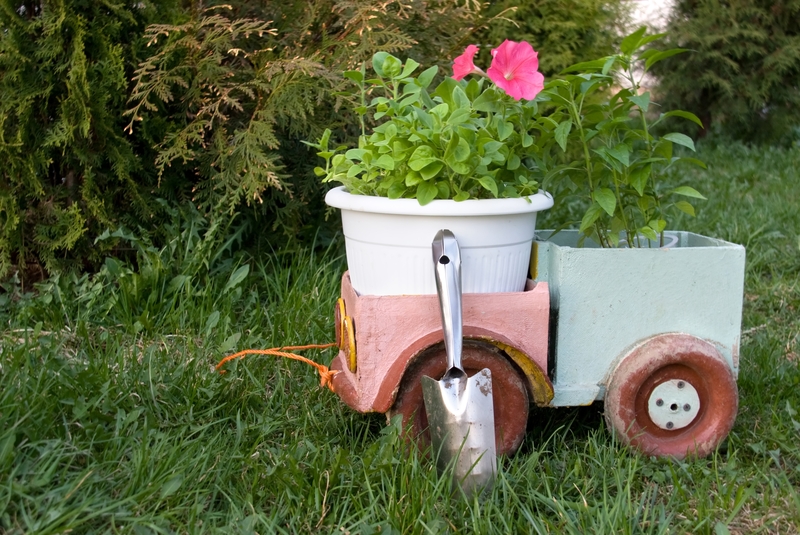Builders Skip Revealed: Essential Information
If you are planning a construction or renovation project, you've likely heard the term builders skip. These large waste containers are a familiar sight on building sites across the UK, helping homeowners, contractors, and businesses efficiently dispose of waste materials. However, understanding how builders skips work, the different types available, and critical guidelines for hiring and using them is vital for a successful project. In this comprehensive article, we reveal all the essential information about builders skips to help you make informed decisions.

What is a Builders Skip?
A builders skip is a robust, open-topped waste container designed specifically to handle the heavy and voluminous waste generated during construction, renovation, or demolition projects. Popular across the construction industry, builders skips come in various sizes and are widely regarded as the go-to solution for managing large quantities of building and demolition waste.
Key features of a builders skip:- Robust Design: Made from heavy-duty metal to withstand rough use and heavy loads.
- Ample Capacity: Typically ranging from 6 to 8 cubic yards, ideal for most building jobs.
- Accessible: Open top allows easy loading from various angles.
- Versatile Use: Suitable for bricks, concrete, rubble, old fittings, and general construction debris.
Why Choose a Builders Skip?
Whether you are a contractor managing a large commercial project or a homeowner renovating your kitchen, opting for a builders skip offers several advantages:
- Efficient Waste Disposal: Keep your site safe and clutter-free by managing waste in an organized way.
- Time and Cost Savings: Eliminates multiple trips to the local waste facility, saving you labour and fuel costs.
- Eco-Friendly: Reputable skip hire companies prioritize recycling, diverting waste from landfills.
- Compliance: Helps you adhere to local authority and environmental regulations regarding waste handling and disposal.
Main Uses for Builders Skips
Builders skips are highly versatile and can accommodate a wide range of project needs. Here is a breakdown of typical uses:
- Home renovations - kitchens, bathrooms, extensions
- Construction site clearances
- Garden landscaping and groundworks
- Roof replacements and repairs
- Office or shop refurbishments
- Driveway and patio installations
Types and Sizes of Builders Skips
Though commonly referred to as "builders skips", there are several variations in size and specification. Choosing the right skip size ensures you don't pay too much for unused capacity or incur extra costs for overfilling.
Standard Builders Skip Sizes
- 6 Yard Builders Skip: Often called the "small builders skip", holds approximately 50-60 bin bags. Great for medium-sized house clearances or small building projects.
- 8 Yard Builders Skip: The most popular size for construction work, holds around 60-80 bin bags. Ideal for larger renovations or building projects.
- 10-12 Yard Maxi Skips: For major construction jobs. Bear in mind some local councils restrict placement of larger skips on public highways.
*Tip: Always discuss your project with your skip hire provider. They can recommend an appropriate size tailored to your waste volume.
What Can You Put in a Builders Skip?
Builders skips are designed to handle heavy and dense waste common to construction and demolition sites. However, there are restrictions on what you can and cannot place in a skip.
Permitted Waste Types
- Bricks and blocks
- Concrete, sand, and gravel
- Soil and hardcore
- Metal and wood
- Plastic, old fittings, drywall
- General non-hazardous waste
Banned Waste - What's NOT Allowed?
- Asbestos
- Tyres
- Electrical items (fridges, TVs, etc.)
- Paints, solvents, chemicals
- Plasterboard (in large amounts)
- Batteries and gas cylinders
- Medical or hazardous waste
*Disposing of restricted items can lead to additional charges or fines and may endanger skip handlers.
Obtaining a Builders Skip - The Process Explained
Hiring a builders skip is straightforward when you follow these key steps:
- Estimate Waste Volume: Assess your project and estimate the amount and type of waste you'll generate.
- Contact Reputable Skip Hire Companies: Request quotes, check online reviews, and ask about recycling policies and delivery times.
- Choose the Correct Size: The provider can offer expert advice. It's often cheaper to book a larger skip than hire an extra one if you underestimate.
- Arrange Delivery: Specify your preferred date and location. Skips can be placed on driveways or, with a permit, on a public road verge.
- Fill Responsibly: Load waste efficiently, keeping within the top edges to avoid penalties for overloading.
- Collection: When full, simply call the provider for collection and responsible disposal or recycling.
Do You Need a Permit for a Builders Skip?
If you intend to place your skip on a public highway, footpath, or verge, you will require a permit from your local council. Many skip rental companies can arrange this for you as part of the service, but be sure to check your local authority's rules and costs in advance. For skips on private land (such as your driveway), permits are usually not needed.
Builders Skip Prices - What to Expect
The cost of hiring a builders skip can vary depending on several factors:
- Size of Skip: Larger skips command higher prices.
- Location: Rates are higher in cities and southern regions.
- Permit Fees: If required, these are usually an extra cost.
- Hire Duration: Standard hire is 1-2 weeks, with longer periods costing more.
- Type of Waste: Heavy waste (soil, hardcore) may cost more due to weight restrictions.
- 6 yard builders skip: ?180 - ?250
- 8 yard builders skip: ?220 - ?300
- Permit (if required): ?30 - ?70
*Always request a full quote, including delivery, collection, and all associated fees. Some companies advertise low base rates but add extra costs for essential services.
Maximizing Value: Tips for Using Your Builders Skip Efficiently
- Break Down Waste: Disassemble larger items so you can maximize the space within your skip.
- Load Evenly: Place flat, heavy objects first and fill any gaps to prevent wasted space.
- Don't Overfill: Skips should not have waste above the top edge ("level load"). Overfilling can incur extra charges and create hazards during transport.
- Segregate Hazardous Waste: Never mix restricted materials with general waste. Always follow safety guidelines.
- Communicate Clearly: Let your waste contractors know the type of waste you'll dispose of for regulatory compliance and recycling efficiency.
Builders Skip FAQ - Your Questions Answered
How much waste can a builders skip hold?
A typical builders skip (8 yards) can hold about 60 to 80 black bags of waste. Remember, dense waste such as concrete or soil may reach the skip's weight limit before it is full to the brim.
Can I put mattresses or old furniture in my builders skip?
Generally, mattresses and most furniture can be disposed of in a builders skip. However, inform your skip hire company as some bulky items incur surcharges or must be separated for special handling.
Is a builders skip suitable for garden waste?
Yes, a builders skip is an excellent choice for large-scale garden renovations--but avoid mixing soil and green waste with general construction debris if recycling is a priority.
What happens to the waste after collection?
Responsible skip hire providers transfer the contents to licensed facilities, where materials are sorted, processed and recycled where possible. Reputable firms strive for landfill diversion rates above 80%.
What steps should I take before hiring a builders skip?
- Estimate your waste volume and type.
- Check for local permit requirements.
- Review your site for access restrictions or safety considerations.
- Discuss recycling options with your provider.
Builders Skip Safety and Environmental Considerations
Using a builders skip comes with responsibilities, both to the environment and your community:
- Site Placement: Position your skip where it will not obstruct traffic, emergency access, or pedestrian walkways.
- Safety Markings: If sited on a public road, skips should have visible reflective markings and lamps to alert drivers.
- Prohibited Waste: Never place hazardous materials in a builders skip. Ask your provider how to safely dispose of specialist waste.
- Recycling: Select providers committed to recycling and responsible disposal to minimize environmental harm.

Builder's Skip vs. Other Skip Types: What's the Difference?
While the builders skip is ideal for many construction projects, it's helpful to differentiate it from other common skip sizes:
- Mini skips (2-3 yards): Best for small clearouts, garden waste, or minor refurbishment jobs.
- Builders skips (6-8 yards): The industry standard for mid-sized building and renovation projects.
- Maxi and roll-on/roll-off skips (12-40 yards): Designed for very large commercial or industrial undertakings.
*Selecting the right skip for your needs saves you time, money, and hassle. Consult your supplier for expert advice specific to your project.
Conclusion: Builders Skip Hire Revealed - Is It Right for You?
From tackling a loft conversion to running a busy construction site, hiring a builders skip is one of the most effective, cost-efficient, and environmentally responsible ways of dealing with large-scale waste. By understanding what goes into selecting, filling, and using a builders skip, you can ensure your project runs smoothly and within regulation.
- Choose the correct skip size and provider for your waste volume and type.
- Stay informed about local regulations, such as permits and restricted waste types.
- Use your builders skip smartly to maximize value and support recycling efforts.
In summary: When managed responsibly, builders skip hire offers unmatched convenience and peace of mind for any building, renovation, or demolition project. Use this essential guide to make confident, informed decisions and ensure your site stays safe, compliant, and efficient.
Looking for reliable builders skip hire near you? Speak to a local expert today to discuss the best skip options for your next project and help keep your waste management simple and stress-free.